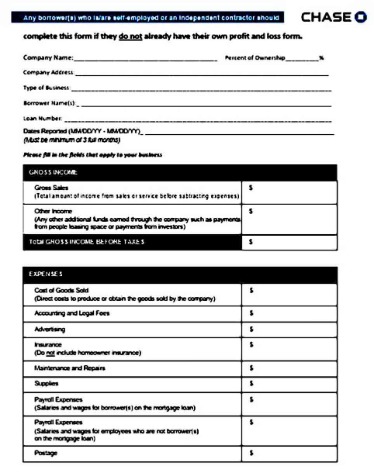William Shatner, best known as Captain Kirk from “Star Trek,” ventured into digital collectibles in 2020 and issued 90,000 digital cards on the WAX blockchain showcasing various images of himself. Each card was initially sold for approximately $1 and now provides Shatner with passive royalty income every time one is resold. By leveraging the publicly distributed, immutable nature of blockchains, all NFTs can be stored in a transparent way, allowing anyone to check the authenticity of any NFT at any time. While NFTs themselves are exchangeable (in the sense that you can buy and sell NFTs from/ to other people) the unique traits of each NFT mean it has its own distinct value. For instance, you couldn’t trade a shiny Charizard Pokemon card for a “Shoeless” Joe Jackson, 1909 American Caramel baseball card like-for-like.
The cards are being offered as a «non-fungible token» (NFT), a way of owning the original digital image. Once that capacity is reached, the block closes and links to the preceding block via cryptography, creating a chain. Cryptography creates an unchangeable timestamp when one block links to another. This permanent record verifies the accuracy of sensitive information like transactions. Traditional databases, on the other hand, are typically controlled by a central authority. Sensitive data comparison 24option vs plus500 may be managed and maintained by an organization or administrator.
How do NFTs and crypto connect?
Physical money and cryptocurrencies are “fungible,” meaning they can be traded or exchanged for one another. They’re also equal in value—one dollar is always worth another dollar; one Bitcoin is always equal to another Bitcoin. Crypto’s fungibility makes it a trusted means of conducting transactions on the blockchain. Another investor parted with $222,000 to purchase a segment of a digital Monaco racing track in the F1 Delta Time game.
You can buy crypto using a credit card on platforms like Coinbase, Kraken, eToro and even PayPal and Robinhood now. You’ll then be able to move it from the exchange to your wallet of choice. Although they’ve been around since 2014, NFTs are gaining notoriety now because they are becoming an increasingly popular way to buy and sell digital artwork.
The file stores extra information that elevates it above pure currency and brings it into the realm of, well, anything, really. As a result, NFTs have become collectable digital assets that hold value, just like how physical art holds value. The blockchain technology means an NFT cannot be copied, substituted or subdivided, so it can be used to certify ownership of any kind of digital file, from art to music, games, videos and more.
What are NFTs, and how do they work?
These non-fungible tokens, or NFTs, are collectible game characters with randomly assigned attributes that make each CryptoKitty more or less rare. Using the native digital signature scheme on the blockchain, it is easy to 4 ways to acquire bitcoin verify the authenticity of each CryptoKitty, its unique attributes, and its owner. Furthermore, the friction and risk of fraud in the transfer of these assets to a new owner is drastically reduced.
Why do NFTs have value?
The infinite copy-making quality of the internet was great for making digital objects abundant. The process of verifying the ownership of both physical and digital assets is an integral component of most businesses and systems. Furthermore, throughout history, individuals have collected scarce and valuable assets such as art, jewelry, and land. Today that trend has extended into collectibles like autographed memorabilia, trading cards, and more.
- Money laundering, wash trading — a scheme that involves selling something to yourself in order to inflate its perceived value — and other shady practices are almost certainly happening in the NFT market, too.
- Non-fungible tokens are also very limited by their liquidity.
- Furthermore, throughout history, individuals have collected scarce and valuable assets such as art, jewelry, and land.
- Despite their similarities, cryptocurrency and NFTs are not the same thing.
By itself, the best-known blockchain Bitcoin leads to millions of tons of CO2 and litecoin price chart market cap index and news thousands of tons of electronic waste each year. Blockchains’ exhaustive record-keeping means that apps built atop them can create snippets of code that can be tracked as distinct entities and transferred from user to user. These “tokens” can be made “non-fungible,” where one cannot be swapped out for another. Part of the allure of blockchain is that it stores a record of each time a transaction takes place, making it harder to steal and flip than, say, a painting hanging in a museum. Of course, there have been a few fun experiments in the NFT space (though I’ll admit that at least one of them was poking fun at the concept of NFTs), but…
If it helps, you can think of NFTs as like the certificate of authenticity you might get if you bought an expensive sculpture. The sculpture could be copied or forged — or someone could break into your house and steal it — but because you have the certificate of authenticity, you can prove that you are the owner of the original. Well, until pretty recently, nonfungible goods didn’t really exist on the internet. Even celebrities like Snoop Dogg and Lindsay Lohan are jumping on the NFT bandwagon, releasing unique memories, artwork and moments as securitized NFTs.
The image, video, music, or other digitized item can be copied and circulated without your permission using various techniques. It’s very easy to copy an image by right-clicking on it and saving it. The person who does this to a tokenized digital asset is pirating the asset because there is established ownership.




